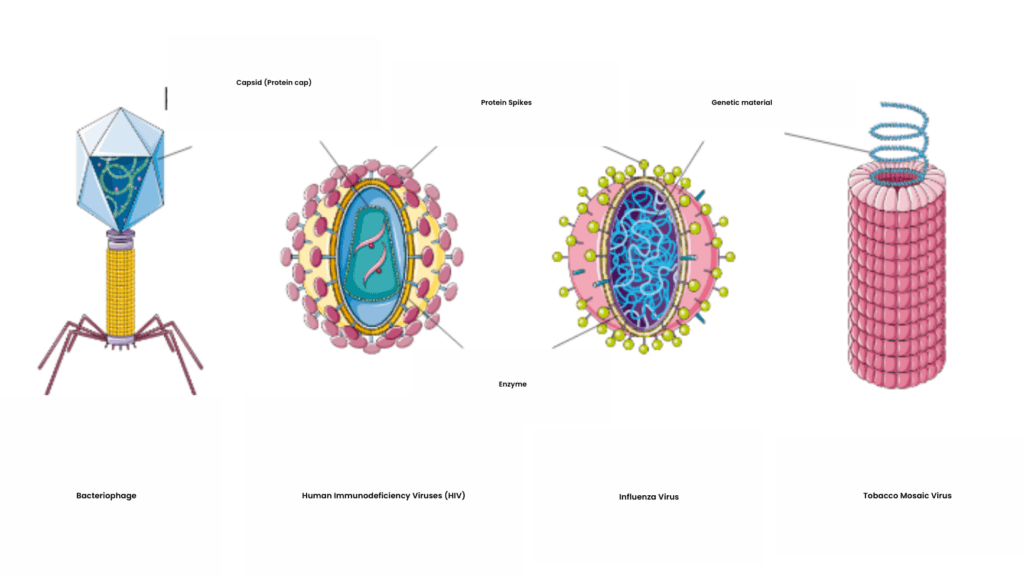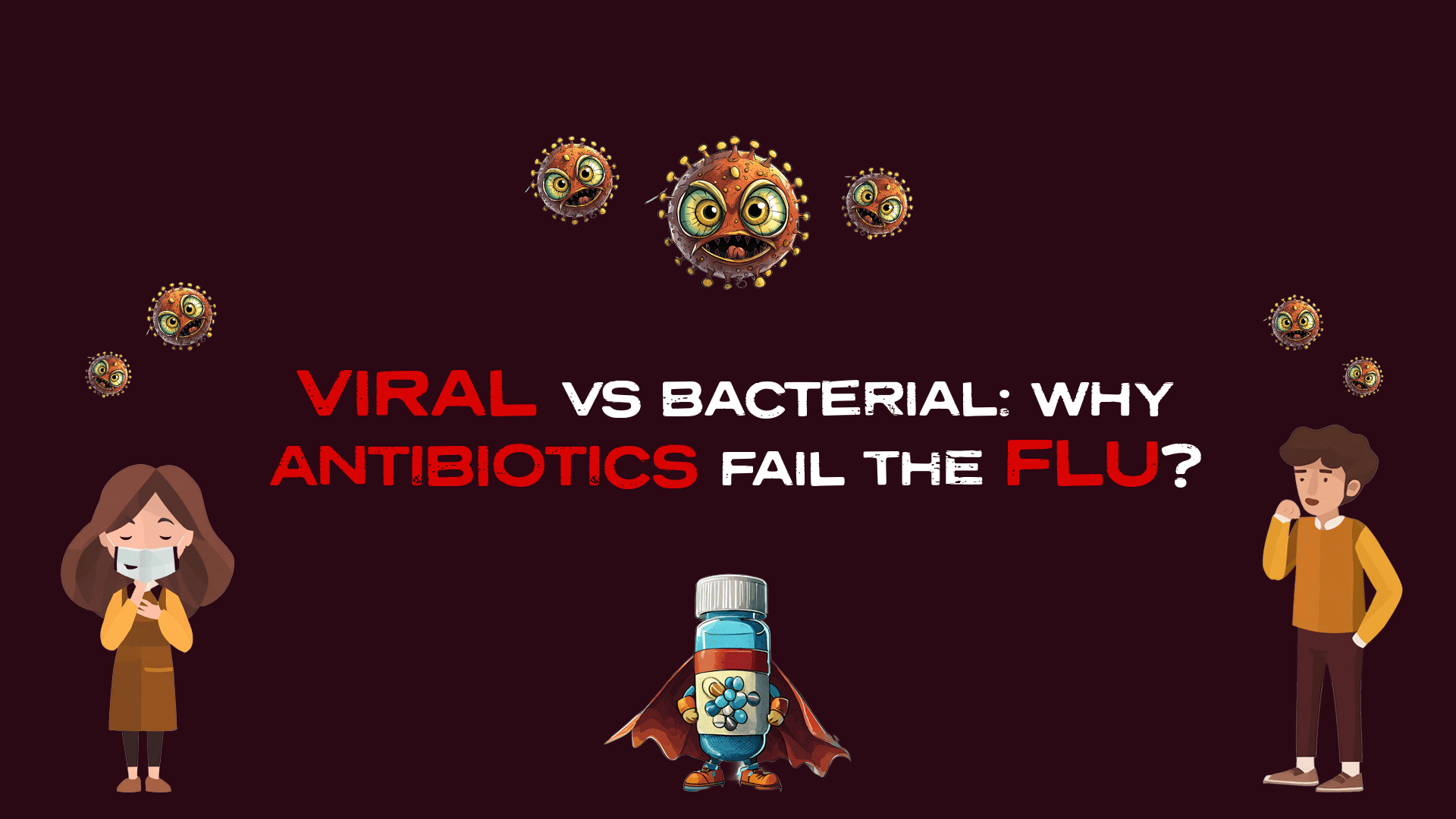This article explores the misconceptions around the use of antibiotics for treating viral infections.
As the season changed, the cosy winter gave way to a colourful spring, bringing beautiful flowers, birds, butterflies, and not-so-pleasant viral infections. The common cold and viral fever have become the topic of every other conversation with family or friends because everyone you know knows someone who has gotten either of those.
Chances are, you’ve either asked or have been asked these questions during the viral season: Did you go to the doctor? Did you take any medicine? Even if we don’t get a ‘yes’ on the first question, the answer to the second one will most likely be a YES. After all, 52% of Indians self-medicate or take medicines without even visiting a doctor, according to a 2015 survey.
When it comes to self-medication for colds and fevers, antibiotics are often a popular choice. But the assumption that antibiotics can treat viral infections stems from a fundamental misunderstanding among antibiotic prescribers and users, which, if not addressed, can contribute to the rise and spread of Antimicrobial Resistance, or AMR, a global health crisis affecting millions of lives worldwide.
But what do viral fever and antibiotics have to do with a public health crisis? To get a better read of the situation, let’s do some quick background checks on these bugs and drugs.
What are viral infections?
We are in the company of billions of entities from the microscopic world. We may not be able to see them with our naked eyes, but they are everywhere and at all times. Among them is a group of sneaky microbes called viruses, many of which cause diseases. Viruses have caused numerous diseases throughout history, including seasonal flu, fevers, HIV/AIDS, and the latest, COVID-19.
For the kind of colossal impact they have on our lives, human-disease-causing viruses are pretty small in size, somewhere between 20 to 200 nanometers, i.e., 250,000 to 25,000 times smaller than a common ant. They also have a very simple structure consisting of a piece of genetic material like DNA or RNA hidden inside a protective protein coating called a capsid.
“Different types of Virus” by Servier Medical Art, used under CC BY 4.0 / Cropped from original, Translated from Nynorsk to English
A major drawback these small yet mighty viruses face is that they cannot replicate on their own, i.e., make copies of themselves. As a result, they are always on the lookout for living cells to be their ‘hosts’. In the case of humans, these hosts can be cells in our respiratory tract. Once close to a host cell, the virus binds itself to it and injects its genetic material into the cell, thus beginning the process of viral infection.
The now-infected host cell is forced to stop all of its usual biological activities and is hijacked to produce the viral material required to create new copies of the virus. As the virus multiplies, it infects other host cells, thus repeating the entire process. This disruption of normal cell activities and, in some cases, the death of host cells by viruses are responsible for the negative health effects associated with viral infections or diseases.
Source: Disinfect-CA,Youtube
What are antibiotics?
Viruses aren’t the only invisible company we have. Bacteria, which are single-celled microscopic organisms, are found everywhere on this planet. There are colonies of billions of bacteria that call our bodies their home. No need to panic; they are friendly little chaps that help us digest our food, regulate our mood, and even fight off unwanted visitors that enter our body. However, not every bacteria is as good. A few members of the bacterial family are pretty nasty and responsible for diseases like urinary tract infection (UTI), tuberculosis, typhoid, the plague, and so on.
These bad bacteria can enter our body via air, food, water, a cut on the skin or during surgery, among many other ways. Once inside, they begin multiplying on their own, unlike viruses that need help. Some even release harmful chemicals that can damage tissues present in our body and make our immune system weak. The rapid growth of bacteria and the presence of unwanted chemicals prevent our body from functioning properly , thus making us sick.
The weapons that help us win the battle against bacteria are called antibiotics. These are chemical compounds, a category of antimicrobials, that disrupt the activities of a bacterial cell by either killing them or slowing their growth. To deal with bacteria, antibiotics follow three attack modes: 1) inhibit cell wall formation, causing the bacterial cells to burst; 2) block the protein production essential for the survival of bacterial cells; and 3) break the DNA during bacterial cell replication to stop them from making more copies of themselves.
Source: UKRI Stories,Youtube
The action modes are a testimony that the mechanisms through which antibiotics fight infections are highly specific to the bacterial structure and designed to inflict maximum damage to bacterial cells. This specificity of antibiotics for bacteria means they are ineffective in killing other microorganisms, such as viruses, that have a different structure.
Now that we have all the information we need, can you guess what the misunderstanding was? If its along the lines of why we are taking antibiotics for viral infections, then you have hit the nail on the head!
Antibiotics are absolute champions against bacterial infections, but when it comes to treating viral infections like the common cold, flu, or viral fever, they are mere bystanders.
It can be difficult to tell the difference between a virus infection and a bacterial infection because the symptoms are similar. For example, the common cold, caused by a virus, and strep throat, caused by a bacteria, both cause fever and sore throat symptoms. We might not be able to tell one from the other but a doctor’s test can!
Therefore, it is wise to consult a doctor and get the right treatment instead of buying over-the-counter medications based on a guess.
How do antiviral drugs work?
The right way to deal with a viral infection is to take antiviral medications or vaccines to prevent them. The main mission of an antiviral medication is not to kill the virus but rather to disrupt the biological machinery required for the virus to make copies of itself, which in this case means stopping the virus from attaching to and entering a host.
To accomplish this task, antiviral medicines work by either targeting the virus or the host cells. The antivirals that target the virus bind themselves to the viral proteins or genetic material. This stops the injection of virus’ genetic material into the host, the replication of genetic material for new viruses and the release of the newly formed viruses from the host cell. Whereas, antiviral drugs that the target hosts use prevent the viral invasion by blocking certain factors inside the host cell that create and transport virus-building materials .
Similar to antibiotics, the mechanism of action of antivirals is exclusively meant to treat viral infections.
Even if the symptoms are similar, it is clear that there are different types of drugs for treating bacterial and viral infections. However, the question remains: how does taking antibiotics unnecessarily contribute to the rise in AMR?
Inappropriate use of antimicrobials such as antibiotics can speed up the process of AMR, which is a phenomenon where disease-causing bacteria evolve into superbugs that are resistant to drugs designed to kill them. This resistance to drugs makes treating bacterial infections difficult and in some cases, can lead to death.
Watch this video to learn more.
In closing, here are a few comics created by students of schools and medical colleges to remind us about responsible use of antibiotics and antimicrobials more generally.


Sanjukta Mondal is a Project Associate at Superheroes Against Superbugs.
Mail : sanjuktamondal.sm@gmail.com
